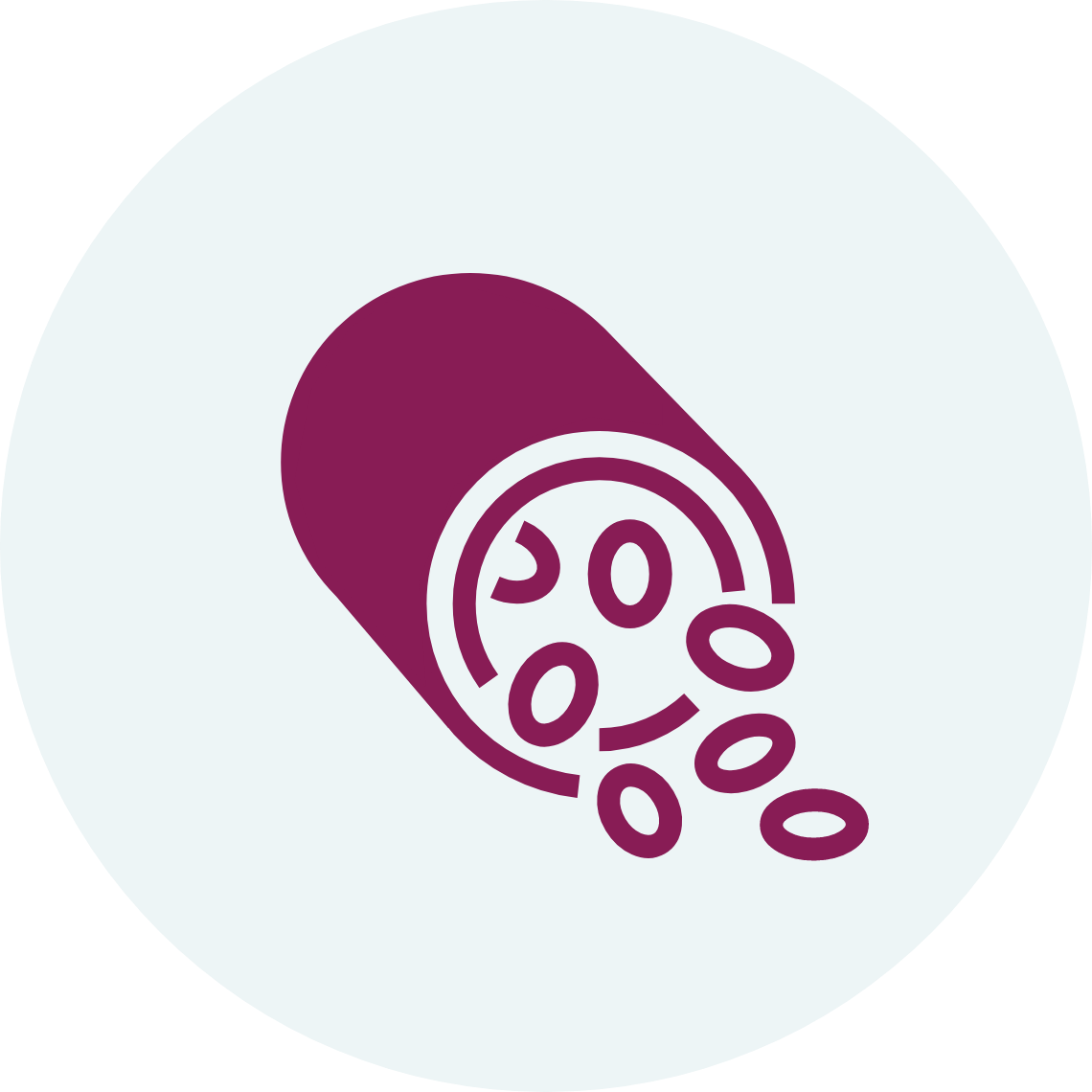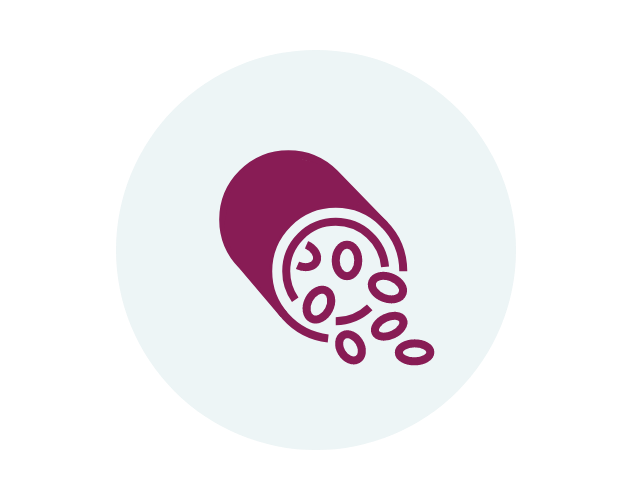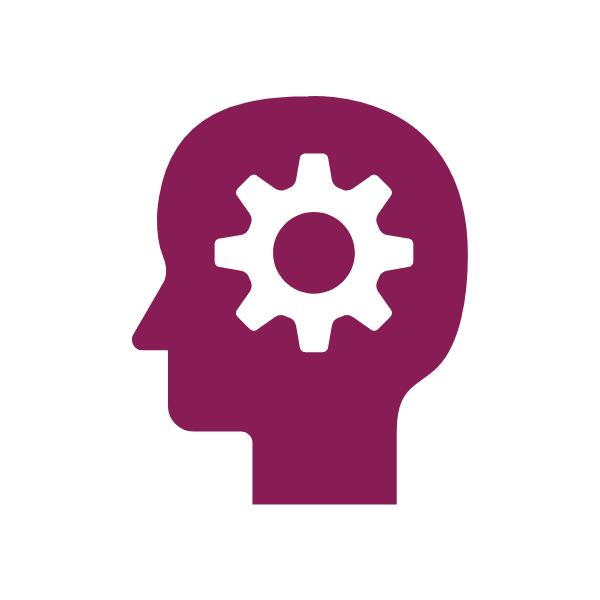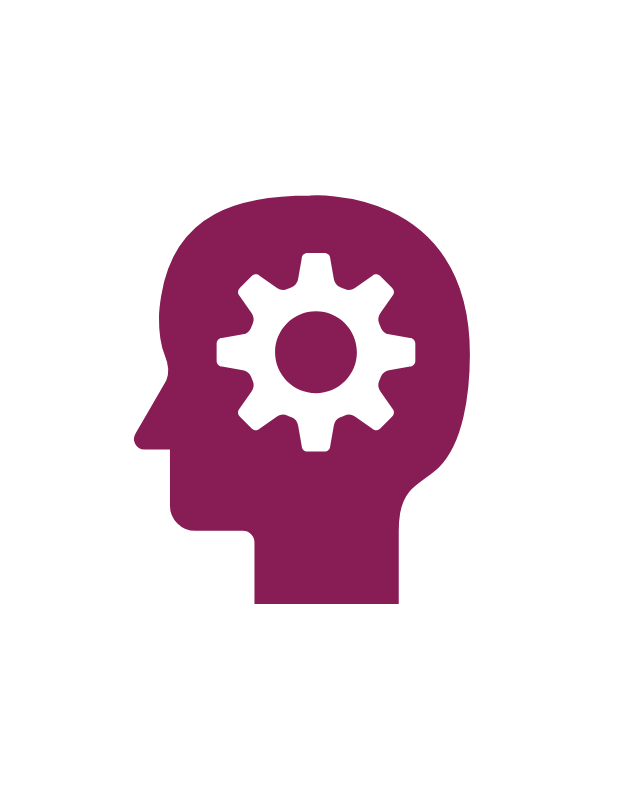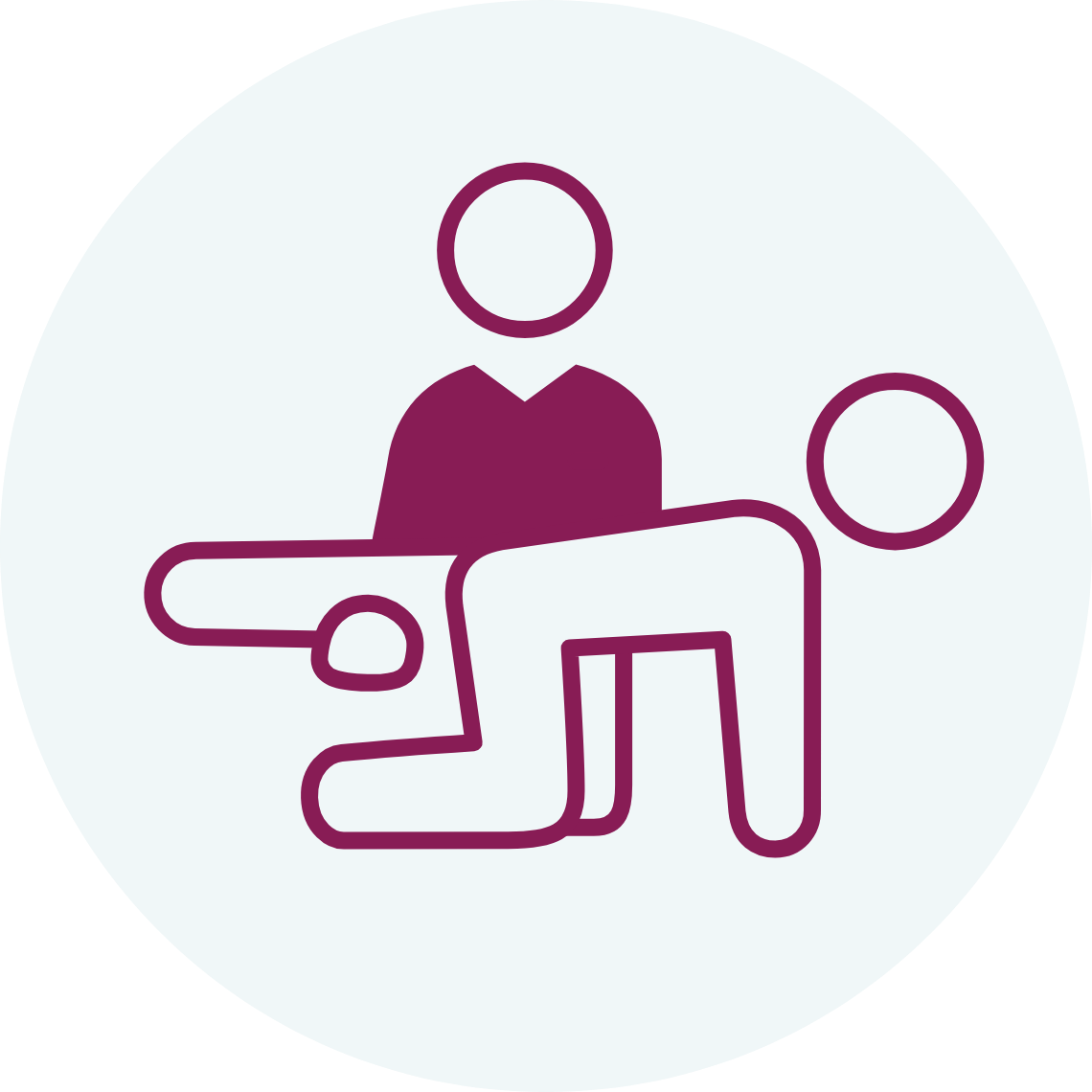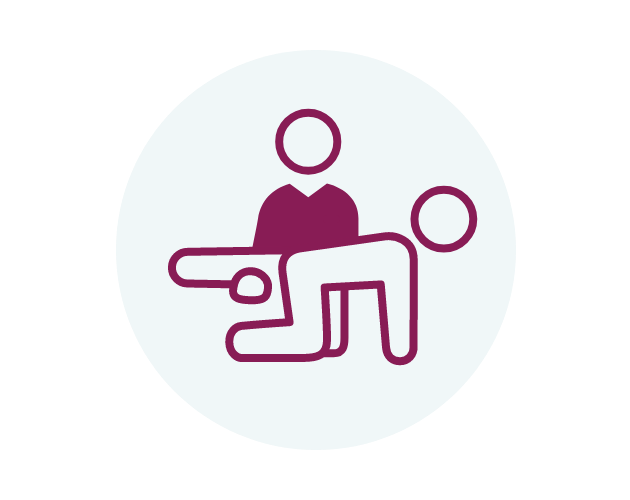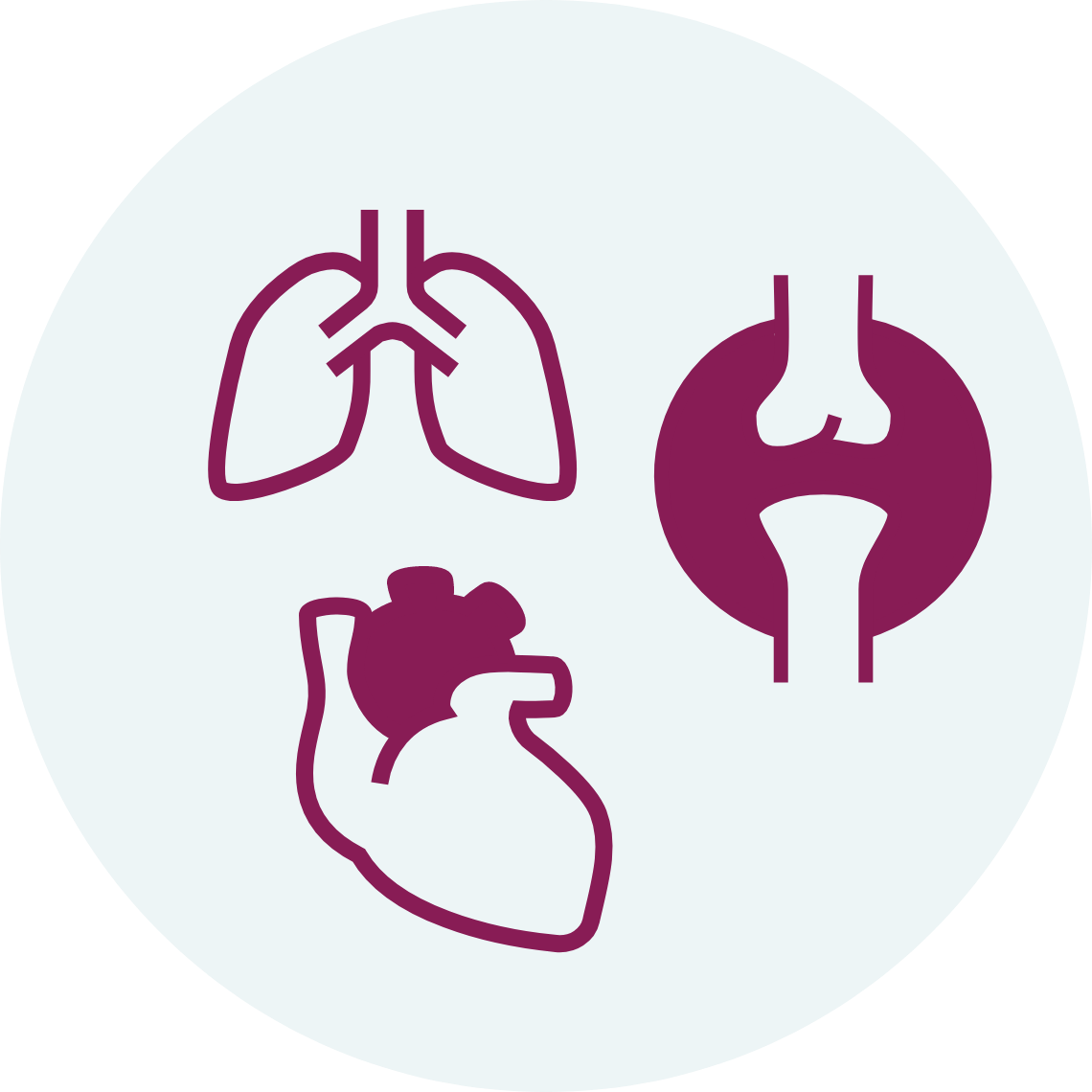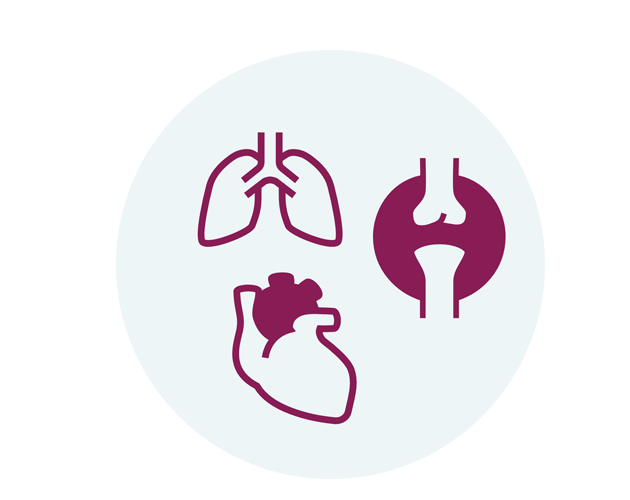
CALEB, living with Duchenne, and his family.
Managing the Impact
While a cure for Duchenne does not currently exist, various options are available to help manage the condition. These include approaches that address the symptoms of Duchenne, as well as those that may slow disease progression. Other ways to help manage the impact of the disease include nutrition management, physical therapy, speech therapy, and/or psychosocial therapy.
Steroids
Steroids, especially a type of steroid called corticosteroids, are the most common medications used to manage the symptoms of Duchenne. A doctor may prescribe these drugs to help slow the muscle damage and weakness caused by the disease. They work, in part, by reducing inflammation—or swelling—in the muscles. They may also help the heart and lungs remain stronger longer, reduce the chance of having a severely curved spine (a condition called scoliosis), and extend the ambulatory period. However, doctors have different opinions about the best types and doses of corticosteroids to use.
Psychosocial, Cognitive, and Behavioral Therapy
Patients with Duchenne may also have cognitive symptoms such as speech and language delays; psychological symptoms such as anxiety, anger, and depression; and behavioral symptoms such as problems interacting with others, sitting still, or concentrating. Psychosocial and cognitive therapy, such as speech and language therapy, can help with these symptoms. Periodically, your child’s doctor will evaluate behavior and learning, as well as emotional, psychological, and social functioning.
People with Duchenne are also more likely to have autism spectrum disorder (ASD). Symptoms of ASD include anxiety, difficulty coping with uncertainty, extreme sensitivity to light and sound, poor social communication, repetitive movements and language, as well as restricted interests (strong interests in specific topics).
If your child has symptoms of ASD, be sure to mention this to your child’s doctor, who may refer you to a psychologist or psychiatrist. The Autism Speaks and PPMD websites discuss different types of ASD therapies, including Applied Behavior Analysis, Floortime, TEACCH, and Relationship Development Intervention. Many of these therapies are behavioral therapies that are designed to improve social and communication skills.
Day-to-Day Maintenance Therapy
Physical therapy can be helpful in maintaining flexibility, strength, and physical function. For example, daily stretching and wearing night splints or braces on the feet and ankles may help keep joints mobile. Swim and aquatic therapy can also be helpful in maintaining joint mobility and preventing shortening and tightening of the muscles. If your child is not ambulatory, standing devices, as well as custom seating and power positioning features on wheelchairs, can also help prevent muscle tightening.
Cure Duchenne offers a full range of physical therapy resources for families of children with Duchenne, in addition to providing a certification program for physical therapists seeking the specialized training required to address the unique needs of individuals with Duchenne.

Managing Associated Conditions
Duchenne patients may need medications for conditions that are often associated with Duchenne. One of these conditions is heart disease, including heart rhythm problems and heart failure. Medications such as angiotensin-converting enzyme (ACE) inhibitors, angiotensin receptor blockers (ARBs), and beta-adrenergic inhibitors are commonly used to treat heart disease associated with Duchenne. People with Duchenne may also have lung conditions or breathing difficulties such as shortness of breath, mucus plugging (mucus getting stuck in the lungs), and pneumonia. Therapies include manually—or mechanically—assisted coughing (using an assistive device) to remove mucus from the lungs, as well as ventilation with positive airway pressure devices to improve breathing during sleep.
Osteoporosis is a common condition among people with Duchenne who are treated with steroids, and can result in fractures in the leg bones or in the vertebrae of the spine. These fractures may in turn lead to premature loss of ambulation, chronic back pain, and spine abnormalities. Intravenous bisphosphonate is often used to treat osteoporosis in Duchenne. Stretching, splints, braces, and surgery are also used to manage and prevent fractures, contractures, and curvature of the spine (see Day-to-Day Maintenance Therapy above).
